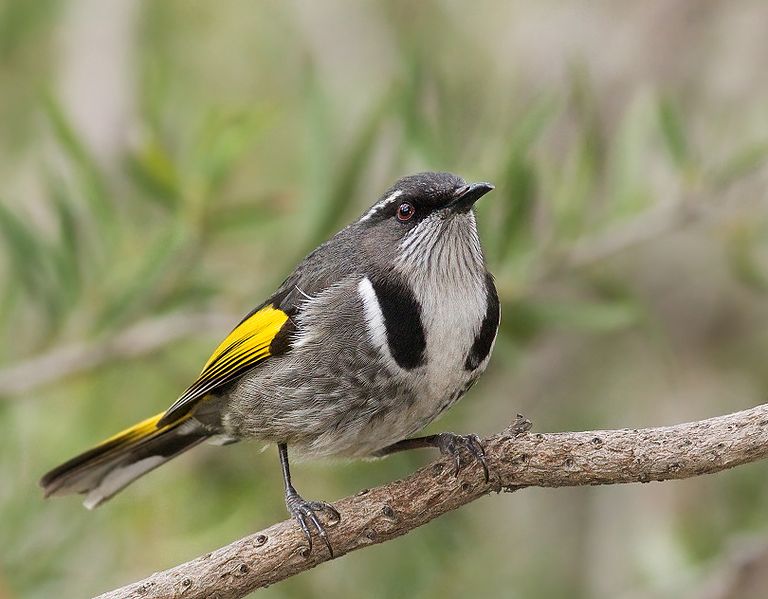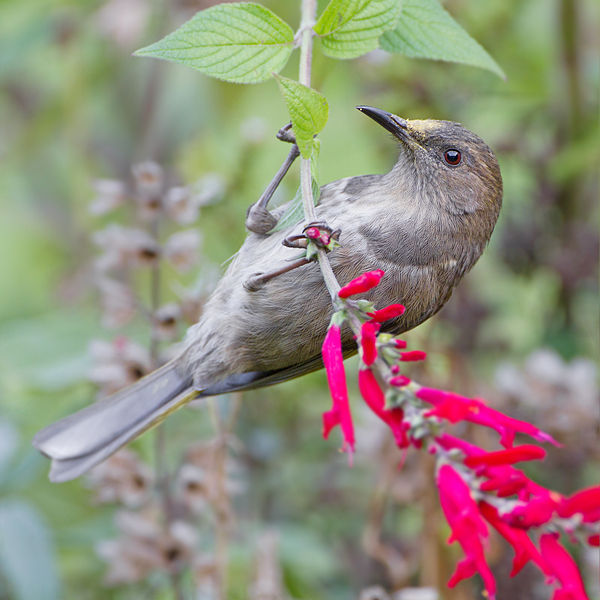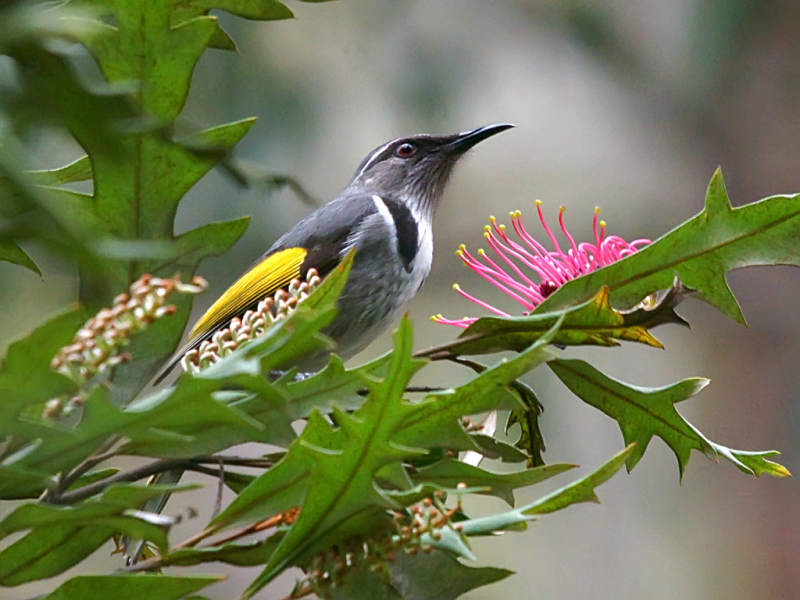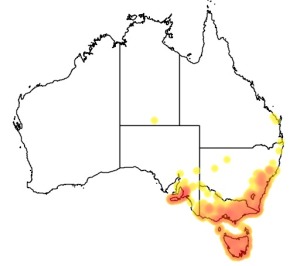Colours
Distinguishing features
The male is dark grey with clear yellow wing-patches with a broad, black crescent, outlined in white, down the sides of its breast, and a white streak above his eye. The top of the tail is black, with yellow edges to the feathers forming distinctive yellow panels on the sides of the tail. White tips on the undertail are usually only visible in flight. The underparts are pale brownish-grey fading to white. The female is duller, olive brown with faded yellow wing patches with similar, though less clear, crescentic markings.
Both sexes have dark grey legs and feet, deep ruby eyes and a long, downcurved black bill. The gape is also black.
Young birds are similar to the adults, though not as strongly marked, and have dark grey bills, duller brown eyes and yellow gapes. Male nestlings can be distinguished by their more extensive yellow wing patches from 7 days old. Moulting patterns of the species are poorly known; Crescent Honeyeaters appear to replace their primary flight feathers between October and January. (Wikipedia)
Size
- From 13 cm to 17 cm (Length of specimen)
Wingspan
- From 16 cm to 23 cm
Synonyms
Distribution
Distribution and habitat preferences
While the it occupies a wide variety of habitats including coastal heath, rainforest, wet sclerophyll forest, mountain forest, alpine woodland, damp gullies and thick tea-tree scrub, they all demonstrate its preference for dense vegetation.
It has been frequently recorded in wet sclerophyll forest dominated by eucalypts and with a thick mid-story and understory of shrubs such as blackwood, silver wattle, Cassinia, Prostanthera, and Correa. At higher altitudes it occurs in alpine heathlands and in woodlands of stunted eucalypt or conifers. (Wikipedia)
Diet
The Crescent Honeyeater is arboreal, foraging mainly among the foliage and flowers in the understory and tree canopy on nectar, fruits and small insects. It has been recorded eating the honeydew of psyllids, soft scale and felt scale insects. It feeds primarily by probing flowers for nectar, and gleaning foliage and bark and sallying for insects. (Wikipedia)



